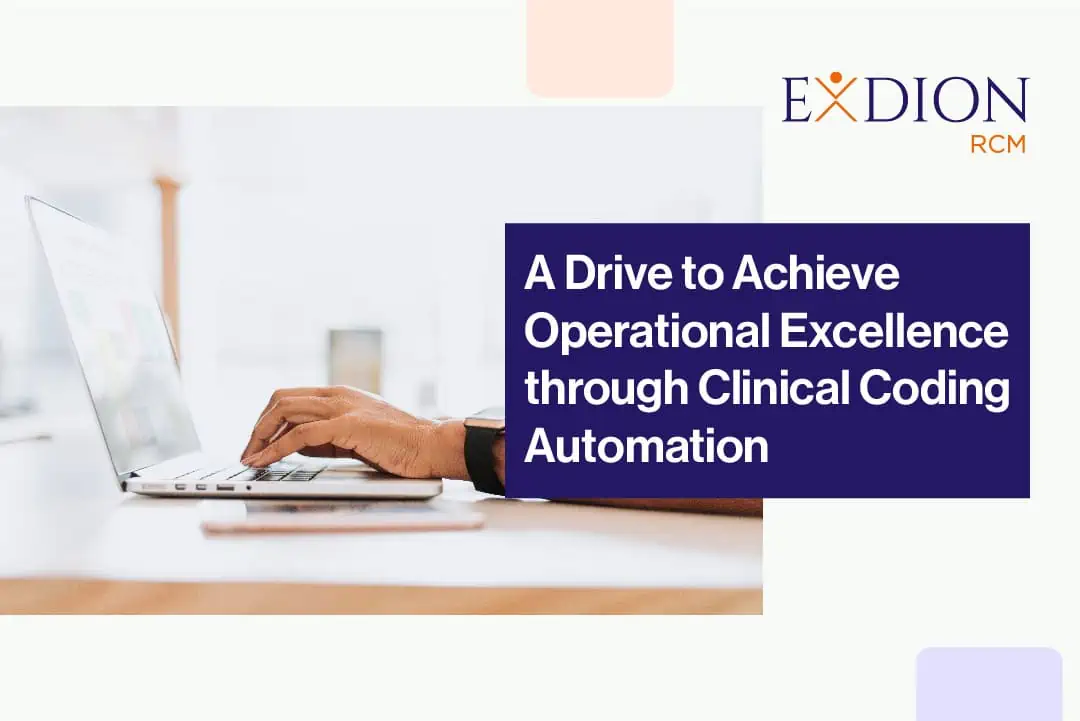
A Drive to Achieve Operational Excellence through Clinical Coding Automation
Clinicians are documenting their patients’ encounter notes into a medical chart. Often, thousands of medical coders and auditors find themselves sitting down and having to painstakingly review these patient notes. They go through this process to convert raw data into specific diagnoses and procedures codes, making sure they are compliant with national standards. The codes they enter need to clearly indicate the exact nature of the treatment being carried out to be compliant and reimbursable.
The codes used are CPT or HCPCS Level I, ICD-10-CM and HCPCS Level II classification systems. Physicians and other healthcare professionals use ICD-10 to document the pertinent diagnostic information. CPT and HCPCS codes are generally used in combination with ICD-10, and function as the national procedure code set when it comes to filing claims with the health plan for medical services, supplies, medications, transportation services, and other items and services.
Fact is, there are well over 70,000 ICD-10-PCS procedure codes and 69,000 ICD-10-CM diagnosis codes. There have also been a total of 329 additional CPT code changes for 2021, including 206 new code additions, 54 code deletions and 69 code revisions.
Medical coders have long relied on these ‘code books’ to refer to the right code for classifying a disease or treatment. For coders, it doesn’t just end with finding the right code but also involves interpreting them correctly. With these codes and prior versions of classification, there is often more than one way to code a diagnosis or treatment.. The responsibility of deciding on the most appropriate choices falls on the medical coder.
With new technology in place, EHRs have emerged and now require the providers to choose their own diagnosis codes and procedure codes to reflect the encounter process. Due to providers’ distraction and at times seeing multiple patients simultaneously , many times some documentation is left out during the charting process, thus not translated into reimbursable codes.
In addition, increased volumes of patient encounters put more pressure on clinics. When demand reaches its peak, they may be sometimes forced to choose quantity over quality, when it comes to documentation. It is quite clear that the current process, as it exists, is neither efficient, cost-effective nor compliant. What if this process could be automated?
Automation of Clinical Coding
Automating clinical coding allows clinics and UCCs a clear idea of utilizing accurate coders needed for proper documentation and billing. Clinics in the US have been working on cutting-edge machine learning (ML) methods and other aspects of artificial intelligence (AI) for a few years now. This lets them enhance the system’s ability to analyze clinical documentation, charts and notes and helps them determine the most relevant codes for each case. Some companies have already started working with AI-enhanced coding systems to quickly identify and validate the right codes.
An automated system provides a more consistent and transparent utilization of the documentation and allows clinicians and billing companies to correctly translate the medical documentation into billable codes.
Coding has been made more challenging by inconsistent clinical texts, documenting a procedure without all required information, or without using the appropriate codes. This makes the entire coding process quite challenging. However, AI-assisted coding automation has tremendous potential to save time, resources and ensure the real-time availability of codes.